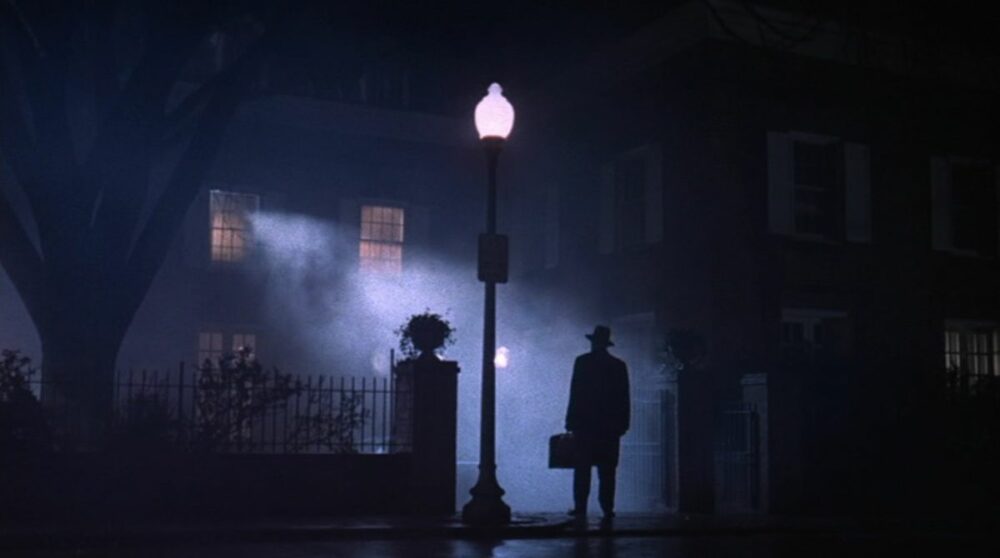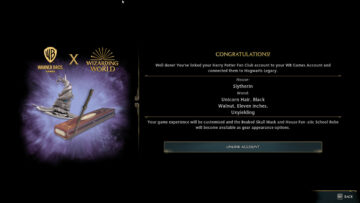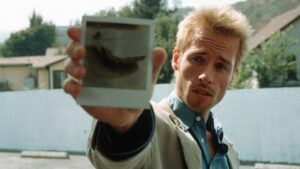Making an Exorcist movie isn’t easy. Up until the most recent entry, released in theaters this week, every movie in the series has suffered from a tumultuous shoot, copious rewrites, or entire recuts.
But that’s not all that special. Many franchises, especially horror franchises, have had messy productions throughout their history. What makes The Exorcist unique is that, for all the production chaos, all of its entries, in one version or another, are actually good — save for the newly released The Exorcist: Believer.
Fully capturing all of the bizarre, horrifying, tragic, and disastrous things that have happened on the sets of Exorcist movies would rival the Bible in length. But we’re not going to let that stop us from talking about the history of one of the strangest and best horror franchises there is. With that in mind, here’s a brief history of the strange production tales behind the Exorcist franchise.
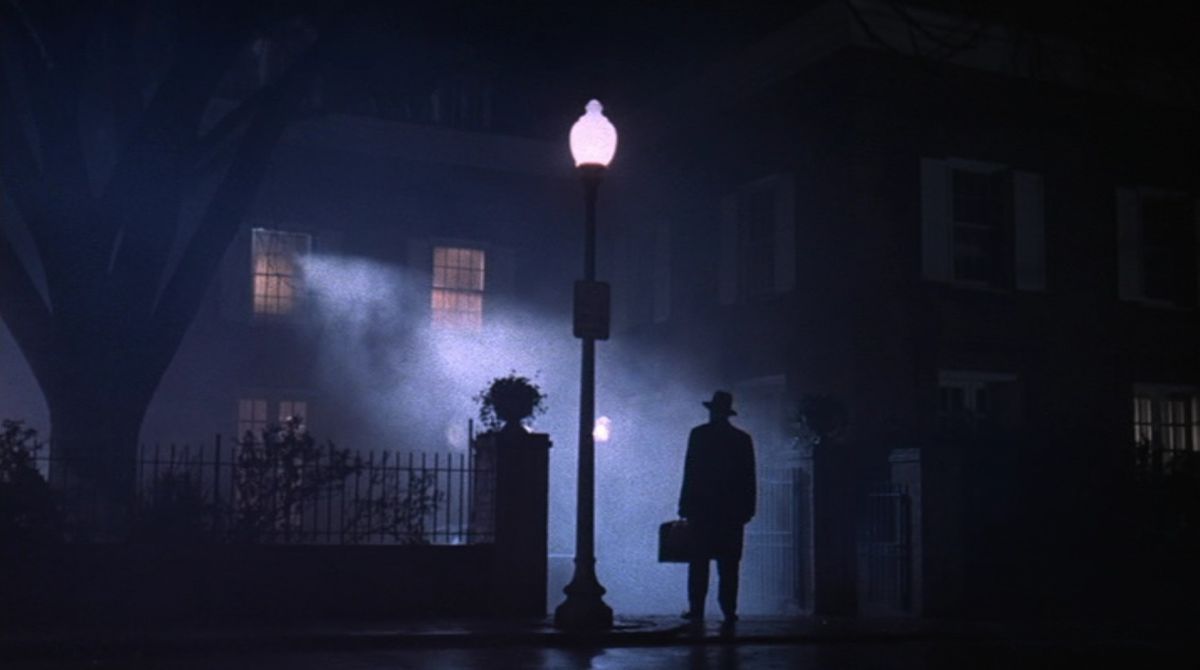
By many accounts, the set of The Exorcist was haunted. The first movie in the series, with a screenplay adapted by original Exorcist novel author William Peter Blatty and directed by the famously prickly William Friedkin, was a smash hit and an instant horror classic. But it was plagued by problems before it even got off the ground.
The first of its many issues was a bird flying into a circuit box, starting a fire that burned down the entire set. That is, everything except for Regan’s bedroom, of course — the place where most of the movie’s demonic activity takes place. Because of this and other production issues, the production schedule ballooned from 85 days to 200.
Worse still are the actual injuries that happened during the making of the movie. Stars Ellen Burstyn and Linda Blair suffered back injuries on set that affected them for the rest of their lives. Blair also suffered several other long-term consequences from the shoot, including an aversion to cold she says was caused by the minus 20 degrees Fahrenheit maintained in the bedroom set.
While it would be easy to attribute all of this to some curse on the set of a scary movie, it’s even easier to see how lax safety standards could have contributed to each of these events.
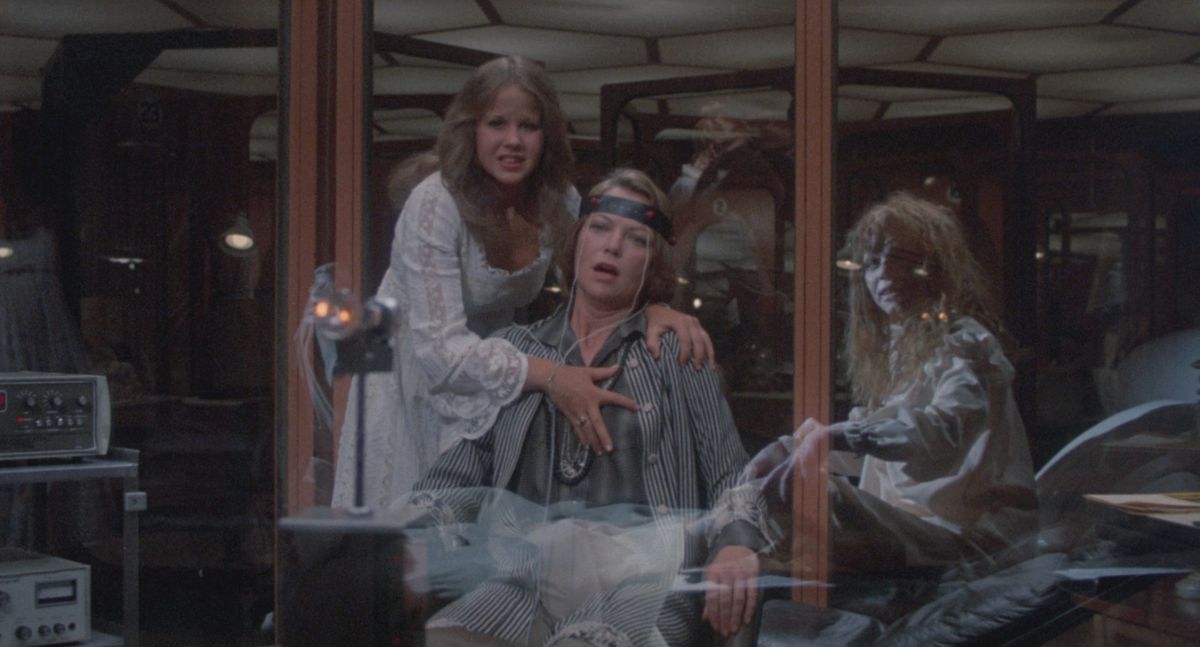
Exorcist II: The Heretic was almost a completely different movie. The sequel was mostly a product of studio executives chasing an easy cash-in. According to the movie’s co-producer, Richard Lederer, in the book The Exorcist: Out of the Shadows by Bob McCabe about the making of the franchise, the plan was to make a low-budget rehash of the original that mostly utilized unused footage from the shoot and alternate angles. However, the plan eventually morphed into something slightly more ambitious.
The film’s script was originally written by playwright William Goodhart (Generation), whose idea for the film — which neither Blatty nor Friedkin wanted anything to do with — was to make it about how human consciousness could eventually be merged together with technology to connect every mind in the world, causing an existential conflict for those that wanted to do good and those that wanted to do evil.
But director John Boorman (Excalibur) disliked Goodhart’s script and brought in Rospo Pallenberg (Excalibur) to do rewrites. They completely retooled the movie, and according to Linda Blair, Pallenberg wound up directing most of the movie, too.
More so than any of the other prequels or sequels (apart from the 2023 release), Exorcist II: The Heretic is a mess. It feels like two stories grafted together without much of a throughline, which in turn feels like a reflection of its topsy-turvy production. Thankfully, The Heretic is still an entertaining and creepy movie. Boorman may not have gotten across exactly the psychology intended, but he certainly nailed the scares.
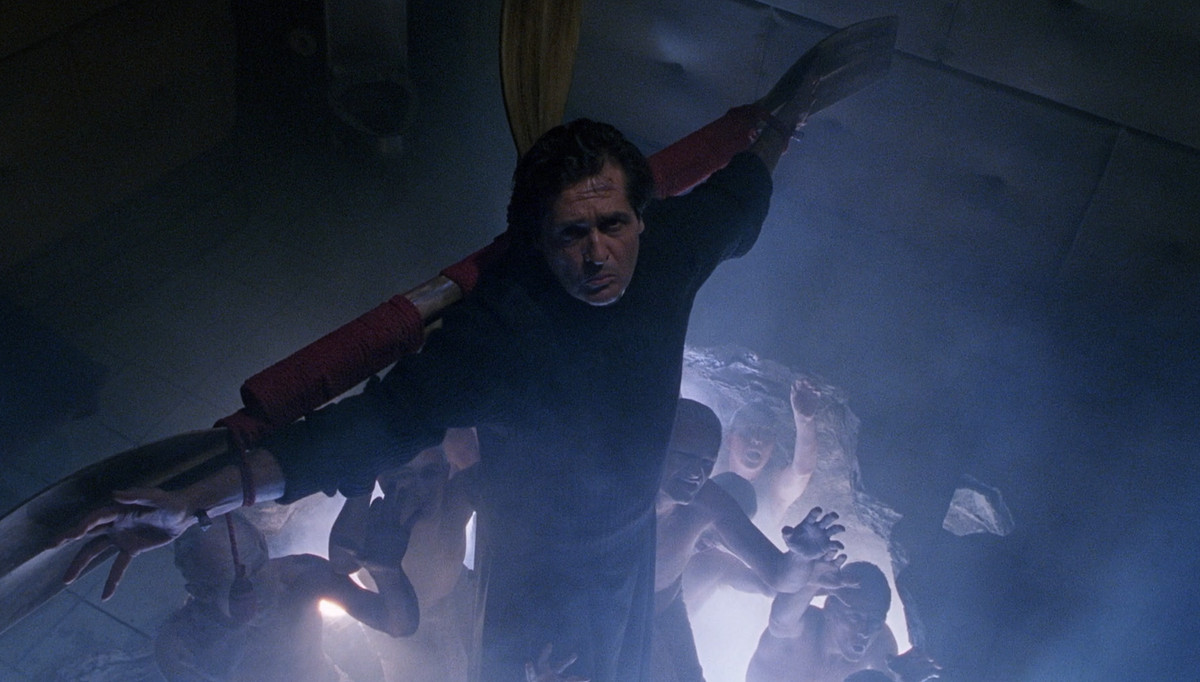
This is where things get particularly strange. The Exorcist III is directed and written by original Exorcist author Blatty, and it’s adapted from his novel Legion. Legion was technically developed as a sequel to The Exorcist, and Blatty first pitched it as a film that would reunite him with Friedkin. However, after Friedkin left the project, Blatty decided to write the story as a novel.
Blatty’s novel is about a series of deaths in Washington, D.C., that directly match up with the hallmarks of a serial killer who’s been dead for years — but whose body was never found. The novel follows Lt. Kinderman, a side character from the original Exorcist novel, who is investigating the deaths. Kinderman begins to link all of these killings slowly back to the exorcism of Regan MacNeil.
After the novel became a hit, Blatty started shopping it to studios and looking for a director. Of the people he met with, the most interesting was probably horror master John Carpenter. The pair talked a few times about the movie, but Carpenter had a problem with the script, which would turn into a much larger issue for Blatty down the road: It didn’t have an exorcism.
In the end, Blatty got what he wanted, directing the film himself. However, long after he completed principal filming, the studio changed its mind. The ending, they said, was no longer good enough, and the movie needed an exorcism. So, according to Blatty, in McCabe’s book, he decided that if anyone was going to rework the ending, it might as well be him. He went about adding a new ending to the script, complete with an exorcist introduced to the plot exclusively for the ending.
The movie’s exorcism itself isn’t awful, but it does come out of nowhere and feels totally unconnected to the rest of the story. Blatty didn’t hate the theatrical version of the movie, but in Out of the Shadows, Blatty claimed his version was better. Unfortunately, it has never quite been fully reassembled. The closest we may ever get is the new 2023 Shout Factory release, which includes the original movie in a new 4K transfer, along with a new cut of Blatty’s version, called The Exorcist III: Legion, that has been assembled from VHS copies of dailies from the set — to replace some of the footage of Blatty’s version that production company Morgan Creek lost.
Even without the full re-creation of Blatty’s vision, The Exorcist III, in any version, belongs right alongside the original as an astounding horror film.
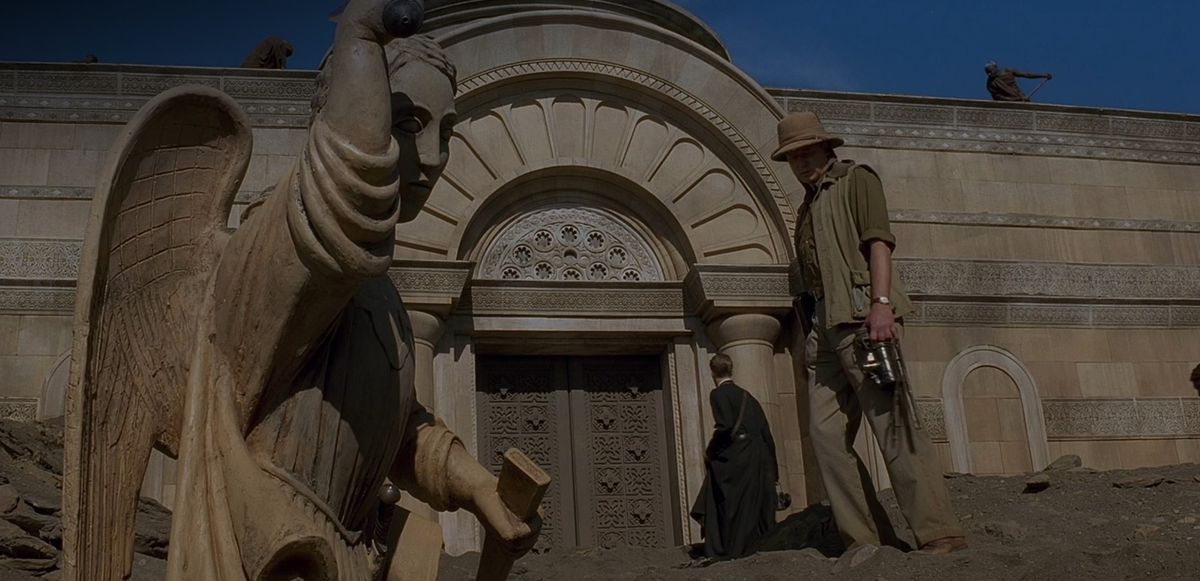
This one is a little more complicated than the others, because technically it involves two separate but related films. The first one made was Dominion: Prequel to The Exorcist, but the first one released was Exorcist: The Beginning. And the story of how that happened is even more complicated than you might think.
The quest for an Exorcist prequel started in the late ’90s with a screenplay by Terminator writer William Wisher Jr. The project went through several directors before the studio had Caleb Carr (The Alienist) rewrite the script and settled on Paul Schrader (Taxi Driver, First Reformed) to direct. The film Schrader came back with, which he insisted was a faithful adaptation of Carr’s screenplay, horrified the studio; there was no blood, no gore, and hardly any scares in the movie at all.
After a few recuts, the studio eventually shelved the movie completely. Instead, it hired director Renny Harlin (Die Hard 2) to come in and make a completely different version, with a new script and entirely new actors — save for Stellan Skarsgård, who stars as Father Lankester Merrin. Harlin’s version, called Exorcist: The Beginning, was set to have more gore, more scares, and more action. In the end, it was a complete disaster.
In an interview with the Independent, Schrader recalls watching the movie while sitting next to Blatty, commenting, “If it stays this bad, I bet there’s a chance I can get mine resurrected.” And that’s exactly what happened. Since Schrader’s film was already finished, and the Harlin version was already underperforming, Morgan Creek let Schrader cut his own version of his film — sort of.
The studio allocated almost no additional budget for Schrader to actually finish post-production. Editor Tim Silano fought to have Schrader included in the final edit of the film. The pair even had to do the film’s color timing themselves, rather than the conventional process of leaving that to the cinematographer. Even more distressing, Schrader wasn’t given enough money or time to commission an original score, so Twin Peaks composer Angelo Badalamenti worked out about 14 minutes of a score, including the movie’s theme, for free. The rest of the music was handled by metal band Dog Fashion Disco, or picked up from the Harlin version of the movie, composed by Trevor Rabin.
In the end, what Schrader compiled wasn’t quite the version of the film he envisioned, but it was a lot closer than the Harlin version. More importantly, it’s actually quite good, a fascinating intersection of Old World faith and superstition meeting the evils of modern imperialism and colonialism. Like so many Exorcist movies, the final confrontation feels a little tacked on, but Merrin’s journey actually does feel like a proper setup for the character we see later in the series.
- SEO Powered Content & PR Distribution. Get Amplified Today.
- PlatoData.Network Vertical Generative Ai. Empower Yourself. Access Here.
- PlatoAiStream. Web3 Intelligence. Knowledge Amplified. Access Here.
- PlatoESG. Carbon, CleanTech, Energy, Environment, Solar, Waste Management. Access Here.
- PlatoHealth. Biotech and Clinical Trials Intelligence. Access Here.
- Source: https://www.polygon.com/23903756/exorcist-movie-series-making-of-good-stuff-scary
- 14
- 20
- 200
- 2023
- 4k
- 50
- a
- A side
- About
- according
- Accounts
- across
- Action
- activity
- actors
- actual
- actually
- adaptation
- adding
- Additional
- affected
- after
- All
- allocated
- almost
- along
- alongside
- already
- also
- always
- ambitious
- an
- and
- Angel
- Another
- any
- anyone
- Anything
- apart
- ARE
- as
- assembled
- At
- attribute
- author
- aversion
- back
- bad
- band
- BE
- became
- because
- been
- before
- behind
- belongs
- BEST
- bet
- Better
- blood
- bob
- body
- book
- brought
- budget
- buried
- burned
- but
- by
- C
- called
- came
- CAN
- capturing
- caused
- causing
- certainly
- chance
- changed
- chaos
- character
- Circuit
- claimed
- Classic
- closer
- CO
- cold
- COM
- come
- coming
- Commenting
- commission
- company
- complete
- completed
- completely
- complicated
- conflict
- connect
- Consciousness
- consequences
- contributed
- conventional
- copies
- could
- course
- Creek
- cross
- curse
- Cut
- days
- dead
- decided
- developed
- different
- direct
- directed
- directing
- directly
- Director
- directors
- disaster
- do
- does
- dog
- down
- During
- each
- easier
- easy
- editor
- end
- ending
- enough
- entertaining
- entire
- entirely
- entry
- even
- events
- eventually
- EVER
- Every
- everything
- exactly
- except
- exclusively
- executives
- existential
- factory
- faith
- faithful
- fascinating
- Fashion
- feel
- few
- Fighting
- Film
- Filming
- films
- Final
- finish
- Fire
- First
- flying
- follows
- For
- found
- Franchise
- Franchises
- Free
- from
- front
- full
- fully
- Gaming
- Get
- given
- going
- good
- got
- great
- Ground
- had
- hands
- happened
- Hard
- has
- hate
- Have
- he
- him
- his
- history
- HIT
- holds
- Home
- horrifying
- Horror
- How
- however
- HTML
- http
- HTTPS
- human
- i
- idea
- if
- ii
- iii
- importantly
- in
- Included
- includes
- Including
- Independent
- Injuries
- instant
- instead
- intended
- interesting
- intersection
- into
- introduced
- investigating
- Is
- issue
- issues
- IT
- ITS
- itself
- john
- journey
- jpg
- larger
- late
- later
- leaving
- left
- let
- like
- linda
- LINK
- Little
- lives
- Long
- long-term
- longer
- looking
- looks
- lost
- lot
- made
- make
- MAKES
- Making
- many
- master
- Match
- May
- Meeting
- met
- metal
- might
- mind
- mine
- minutes
- Modern
- money
- more
- Morgan
- most
- mostly
- movie
- Movies
- much
- Music
- needed
- never
- New
- newly
- Next
- no
- not
- novel
- of
- off
- Old
- older
- on
- One
- open
- or
- original
- originally
- Other
- Others
- out
- over
- own
- pair
- particularly
- Paul
- People
- peter
- Picked
- pitched
- place
- plan
- plato
- plato data intelligence
- platodata
- platogaming
- Polygon
- Portal
- post-production
- Principal
- probably
- Problem
- problems
- Process
- Product
- Production
- productions
- project
- proper
- Psychology
- quest
- quite
- rather
- recent
- reflection
- RELATED
- release
- released
- replace
- REST
- Richard
- right
- Rival
- road
- Safety
- Said
- save
- says
- schedule
- score
- script
- see
- sees
- separate
- sequel
- sequels
- serial
- Series
- set
- sets
- settled
- several
- she
- Shopping
- side
- since
- Sitting
- Smash
- So
- some
- something
- Sponsored
- standards
- standing
- stands
- Stars
- started
- Starting
- statue
- still
- stop
- Stories
- Story
- strange
- studio
- suffered
- takes
- tales
- talking
- technically
- Technology
- than
- that
- The
- the world
- their
- Them
- theme
- themselves
- there
- These
- they
- things
- think
- this
- those
- Through
- Throughout
- Tim
- time
- times
- timing
- to
- together
- too
- totally
- transfer
- Trevor
- true
- turn
- two
- unfortunately
- unique
- until
- up
- us
- utilized
- version
- vision
- wanted
- Warner
- Warner Bros
- was
- washington
- watching
- we
- week
- well
- went
- What
- where
- while
- WHO
- whose
- william
- with
- without
- woman
- worked
- world
- would
- write
- writer
- written
- Yahoo
- years
- you
- zephyrnet
